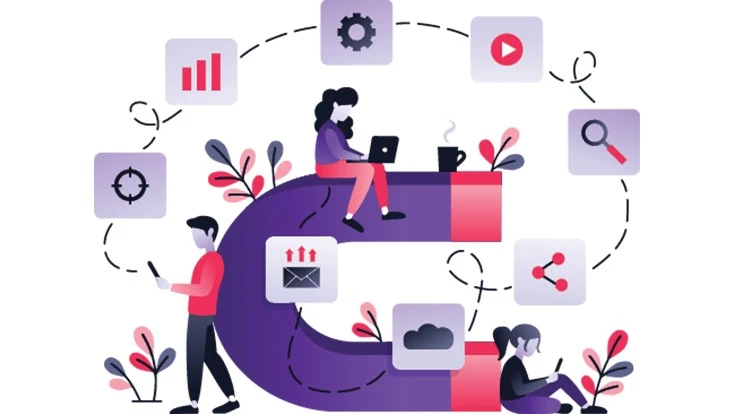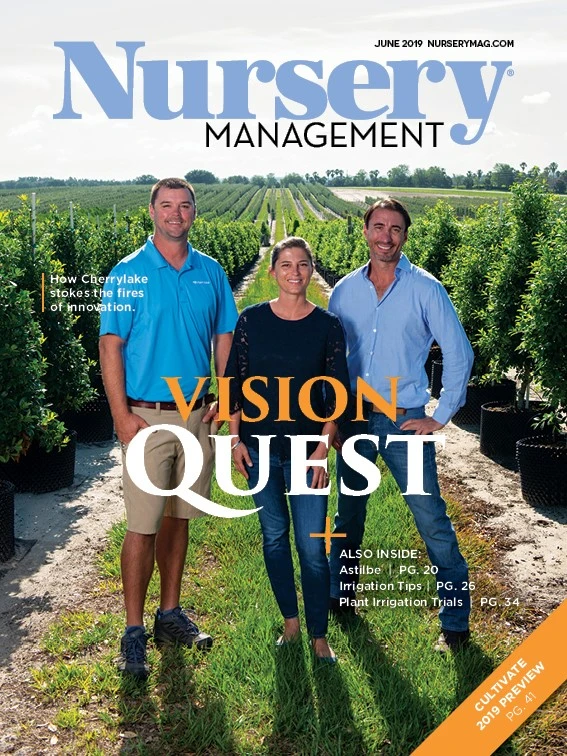
ADOBE STOCK

Are you tired of hearing about the “candidate’s market?” Do you want to relieve the stress and strain of finding new talent just to meet the daily demands of your business, let alone grow your business? Well, there are two sides to this coin --recruitment and retention.
Recent polling of CEOs by The Conference Board, released in January of this year, reflect that their top internal concern for 2019 is obtaining and retaining talent. According to a September 2018 article from CNBC, “Workers are quitting at the highest rate since 2001.” A driving need for obtaining talent is retention. Certainly, some of the small- to medium-sized nurseries are reading this and thinking, “Those studies are all fine and good, but I bet they apply only to the big companies.”
Think again. Look at your current situation and I bet you will relate to it more closely than you think. We have been intimately involved with serving the horticulture industry for close to two decades and can definitely say the concerns uncovered by these studies are shared throughout the industry. It stands to reason that if your business retained its employees longer, the pressure to hire more would recede. Well, at least somewhat. If your business is growing, then the need to hire more employees will always be a key business challenge. Even if your business is stable or even contracting, in all three situations the retention of employees will certainly reduce the stress.
How does a business retain its employees? Every employee is different. Some are there just for a paycheck. Some think of it as just a job. Others are there to launch a career. Regardless of how an employee looks at their employment, what keeps them there is how an employer invests in them. Investing in your people is not exclusively about paying them more money, it includes helping them do their job better, expanding their responsibilities and growing their careers. Cultivating your employees will drive engagement and improve retention.
When the Great Recession of 2008 hit, two core business areas were cut almost immediately: recruitment and training. Since then, recruitment has roared back, while training (now often referred to as learning and development or L&D) has slinked back at a snail’s pace. Part of the reason is the perceptions of these two critical business initiatives that predate the recession. It is, however, time to shift perception and properly invest in your people in order to retain them.
I had the privilege of speaking with Claire Chandler, SPHR, President and Founder of Talent Boost, a company that helps leaders build legacies by inspiring the “Whirlpool Effect” in their teams. Claire consults with small- to medium-sized businesses just like yours all over the country on L&D initiatives that are customizable to their unique size, corporate structure, and budgetary constraints.
“Leading up to the recession, a lot of the focus of L&D was more on the remedial side,” says Chandler. “[The idea of] ‘let’s get people into L&D opportunities to improve where they are’ is weak.”
Chandler says that though there were some soft skills training, it was mostly about technical skills.
“[L&D] lacked the holistic training that we are seeing today. It was focused on filling holes, especially for corporate led training.”
She characterized the pre-recession training as driven by the “carrot and the stick” approach.
Of course, this was also a time when many businesses were investing more budgetary dollars in training their people. Many businesses invested in new technology, innovative techniques and remedial skills to lay a foundation for growth. But since the recession, Claire has seen budgets for L&D cut drastically — in many cases by more than 50%.
“If you hire the right person the right way and if you nurture the new hire, just like your plants, they will grow and flourish.”
It has been 10 years since the declared end of the Great Recession, yet many businesses have this old impression of L&D that holds them back from spending time, talent and money to appropriately invest in their people. But the perception is beginning to change. Businesses are becoming less interested in large corporate training departments and more driven by customizable solutions-based training. Today, according to Chandler, L&D is more partnered with the business and unit. More outsourced. There is an opportunity to get more tangible and granular.
A consistent theme she has seen, from small- to medium-sized firms and in both union and non-union environments, is the clamoring for more operational training and L&D that is customized to their specific needs. This thirst for L&D crosses all employment groups from front line workers and middle management to senior and even executive management.
Understanding where we were and what employees want helps to identify how to move forward, to innovatively cultivate employees, quench their thirst and grow your business into the future ahead of competition. Why is this important?
“L&D is no longer a perk, it is a requirement,” says Chandler. “There have been times in the past where employees were sent to development and led to believe this is a reward, that it was geared to high potentials and performers. Millennials have had a lot to do with moving this needle. But now it is a requirement, a necessity. They are expecting and assuming a two-way relationship. [For instance] ‘I’m going to bring my skills and best and in return I expect to be nurtured and have direct access not just to my direct manager but their management above and expect that I would be considered for advancement and other employment benefits.’”
The biggest perceived impediment by small- to medium-sized businesses leaders is budget, but it’s all proportional, all relative, she says.
“Many think that because they are not a large company they cannot afford the Deloitte scope analytics, that because of their size, and only their size, they are losing out to larger companies for top talent. [However], from a recruiting and retention perspective — from exit interviews and [my] experience in these functions — many have been retained by small to medium companies due to ‘access.’ Where people might go to larger companies for vertical advancement, title and large money, others have remained because of the unmatched access that small- and medium-sized companies can provide, such as access to upper management and to more ad hoc learning opportunities,” she adds.
If you hire the right person the right way and if you nurture the new hire, just like your plants, they will grow and flourish. Culture is critical to the success as well. It is the right environment that will facilitate the growth of the plant and the person alike. Feeding the plant means the right light, soil, nutrients and water. Feeding employees means nurturing, coaching, feedback and L&D.
There is an old saying where a CEO asks his head of human resources, “What if we train them and they leave?” To which the head of HR responds, “What if we don’t and they stay?” There is always a risk of employees leaving. Investing in them and providing access in a way they cannot gain elsewhere is at the heart of retaining them.
Author’s note: Claire Chandler, SPHR is a leadership strategist with 25+ years of experience in business leadership and organizational effectiveness. She helps ambitious organizations accelerate performance by building better leaders.

Michael Maggiotto Jr, PHR, SHRM-SCP is a Sr. Human Capital Advisor at BEST Human Capital & Advisory group and leads the human resources advisory services as well as providing retained executive search. He developed the firm’s WR2 HR Analysis designed to identify the Wins, Risks, and Remedies for horticulture and other niche industry companies.

Explore the June 2019 Issue
Check out more from this issue and find your next story to read.
Latest from Nursery Management
- GIE Media Horticulture Group wins five regional 2025 Azbee Awards of Excellence
- Get to know Pat Reilly with NewGen Boxwood and the American Boxwood Society
- Terra Nova Nurseries introduces rust-free and disease-resistant heucherella
- John T. Nickel, founder of Greenleaf Nursery Co., passes away at 89
- Three tours offered at 2025 Farwest Show
- Garden Media Group announces sixth annual Women in Horticulture Week
- Star Roses and Plants announces National Knock Out Rose Day
- The Growth Industry Episode 4: How federal budget cuts are affecting horticulture nonprofits





